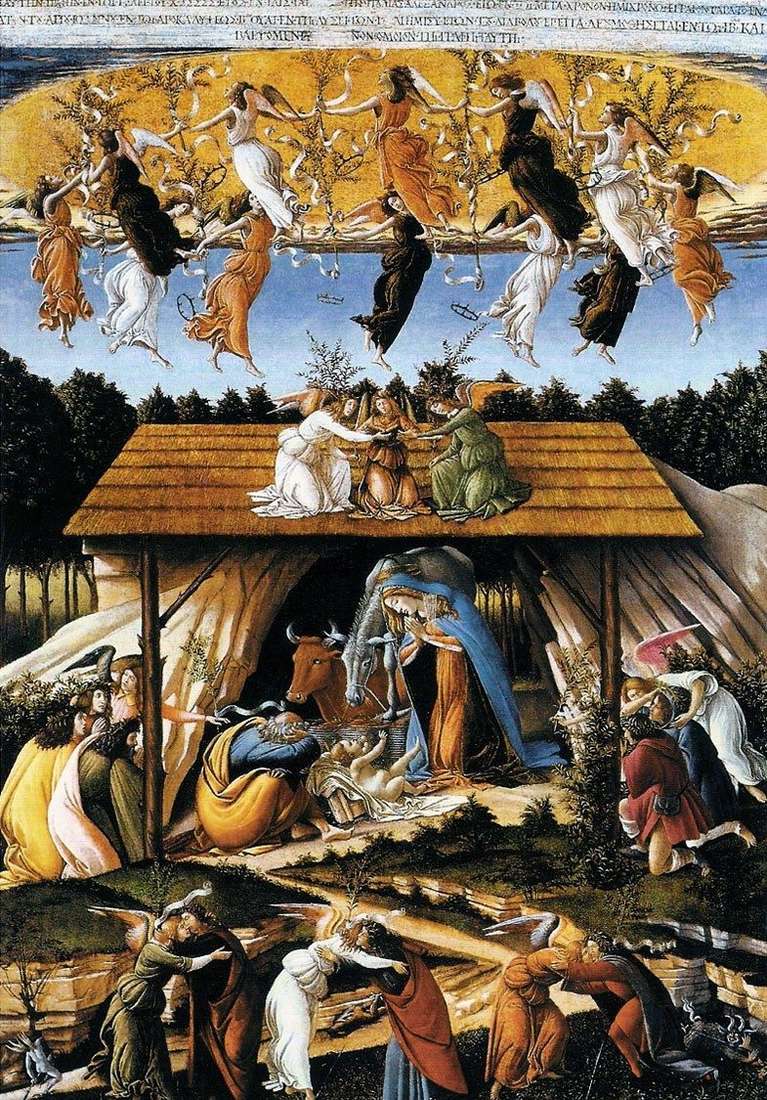
Christmas is one of the most ancient and favorite Christian holidays. From this most important event, people count down the time, saying, “this happened before the Nativity of Christ, and this is after it.” This holiday helps us to relive what happened 2,000 years ago, awakening in our hearts wonderful feelings of love for peace, kindness to people, hope for renewal, reminds us of the joy of the divine presence.
The desire for renewal and universal happiness was expressed by Sandro Botticelli in his wonderful “Christmas”. In the upper part of the picture there is an inscription in Greek “This painting was written by me, Alexandro, at the end of the confusion after the time when John’s prediction was fulfilled in chapter 11 and the second tribulation of the Apocalypse, when Satan was released to earth for three and a half years. he will be imprisoned again in the chain and we will see him defeated, as represented in this picture. “
Remembering the prophecies of Savonarola, Botticelli sees in the lines of the Apocalypse the connection with the shocks that fell to the share of native Florence. The artist created an unusual scene in iconography. In the center is a cave above which a sloping thatched roof is erected, under which a holy family has found shelter. Near the traditional nursery on the ground lies a baby, above him is a praying Madonna. Opposite her, Saint Joseph sits with his back to the viewer. Around these main actors, not daring approaching the manger, the remaining characters are grouped: on the right are the shepherds, to the left – the Magi, and those and others are accompanied by angels. Here, external manifestations lose their force – the eastern kings do not offer gifts, as usual, they do not shine with the magnificence of clothes. They are allowed from afar to look at the newborn and express their reverence in concentrated prayers.
In the hands of the angels hold the olive branches and fluttering tapes with the evangelical texts: “Glory in the highest God and on earth peace, goodwill in men,” and golden crowns hang on olive branches symbolizing peace. Joy sounds in the solemn singing of angels, affects in an easy and fast dance in heaven, in reverent worship of the Magi and shepherds, in the arms of a pilgrim and angels.
In the picture, good triumphs, evil forces lose their power – therefore the little devils in the foreground, writhing, disappear in the bowels of the earth. A bright color enhances the feeling of a festive atmosphere. Each figure, each object is colored with intensity, characteristic of folk products in pink, green, purple, gold, white, red.
Botticelli so skillfully and expressively found the intervals between the groups that the composition structure can be compared in a musical work: there is a sensation of an almost sounding anthem, after short pauses, powerful and harmonious chords arise with new force. Peace, harmony, the triumph of good-all that the Florentines dreamed of and achieved, was embodied in the work of Botticelli as a dream clothed in an ethereal shell.
 Adoration of the Magi. The altar of Zanobi by Sandro Botticelli
Adoration of the Magi. The altar of Zanobi by Sandro Botticelli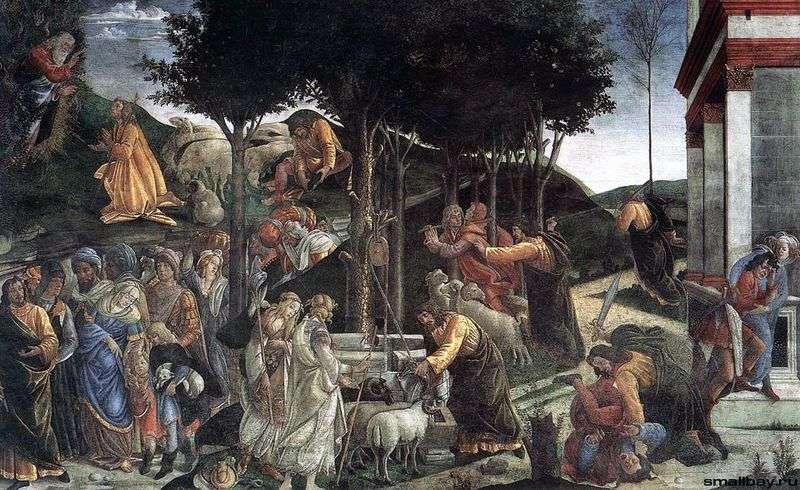 Scenes from the life of Moses (fresco) by Sandro Botticelli
Scenes from the life of Moses (fresco) by Sandro Botticelli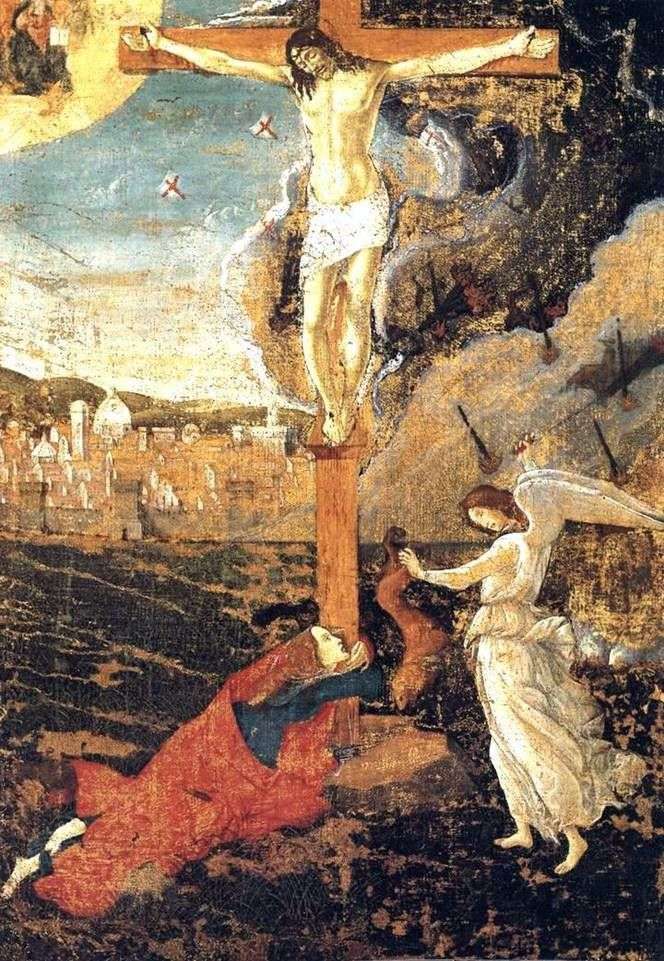 The Crucifixion by Sandro Botticelli
The Crucifixion by Sandro Botticelli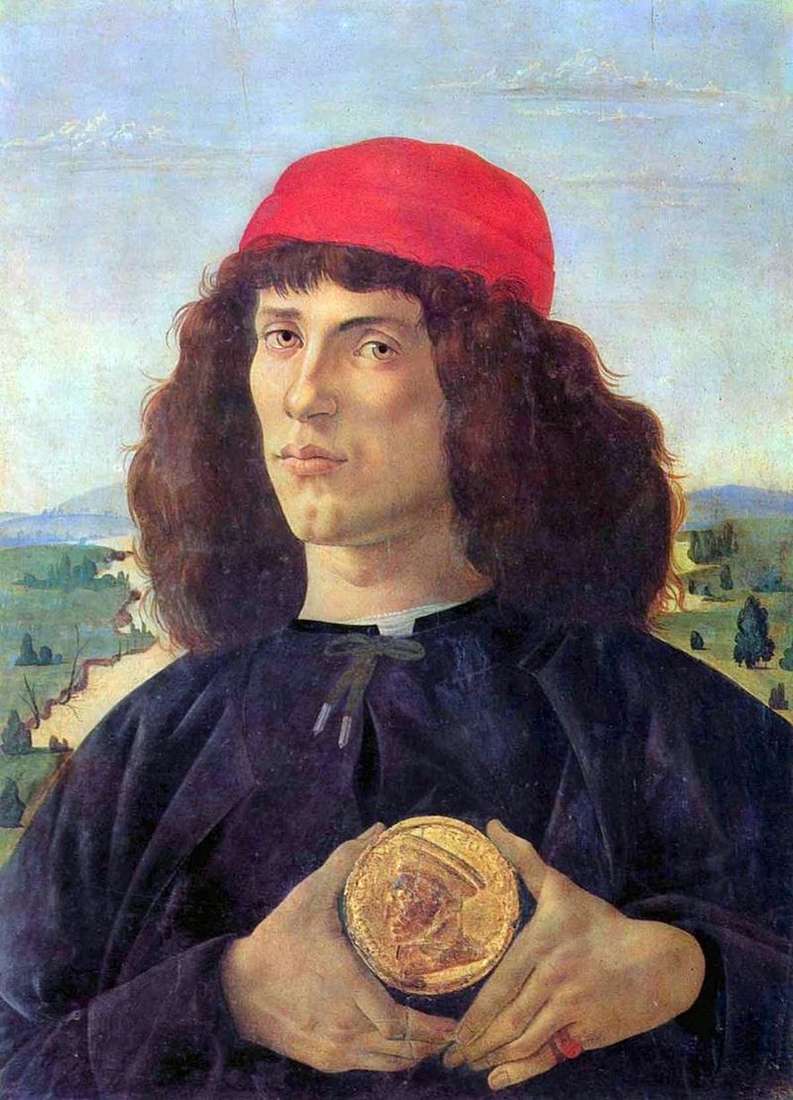 Portrait of a man with a medal by Sandro Botticelli
Portrait of a man with a medal by Sandro Botticelli Punishment of Korea Dafan and Abiron by Sandro Botticelli
Punishment of Korea Dafan and Abiron by Sandro Botticelli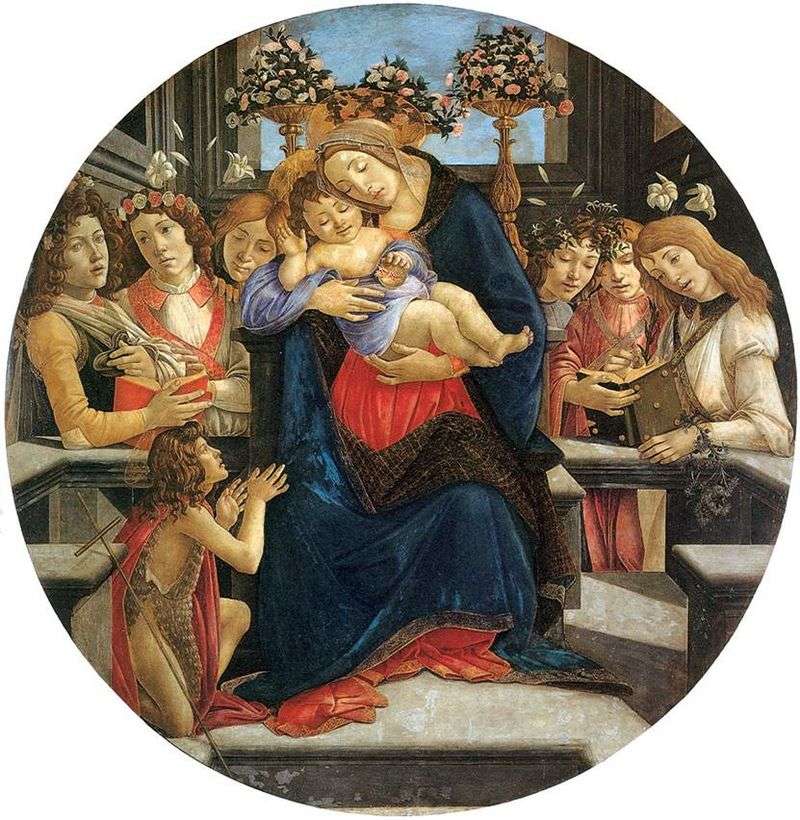 Madonna with Child, Angels and Saint John the Baptist by Sandro Botticelli
Madonna with Child, Angels and Saint John the Baptist by Sandro Botticelli The altar of San Marco, or the Coronation of Mary with the angels, the Evangelist John and St. Augustine, Jerome and Eligius by Sandro Botticelli
The altar of San Marco, or the Coronation of Mary with the angels, the Evangelist John and St. Augustine, Jerome and Eligius by Sandro Botticelli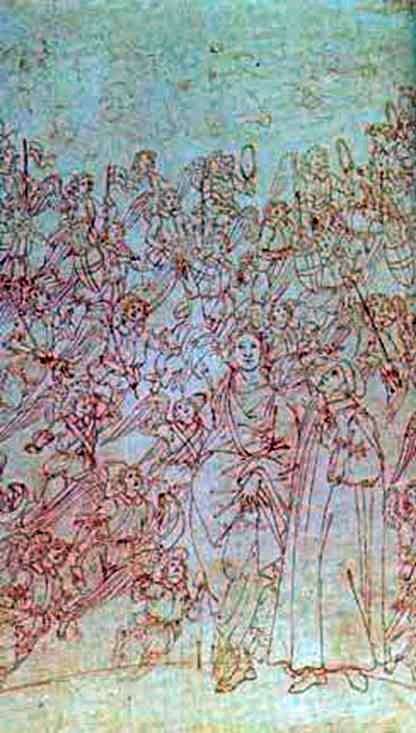 Dante and Beatrice, from the “Divine Comedy” by Sandro Botticelli
Dante and Beatrice, from the “Divine Comedy” by Sandro Botticelli